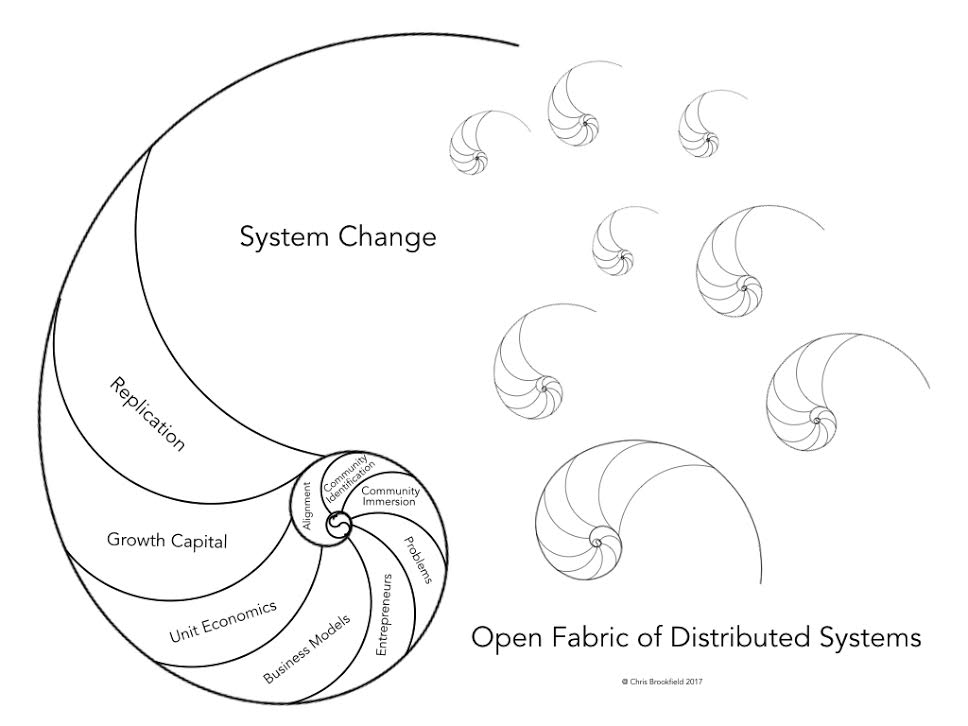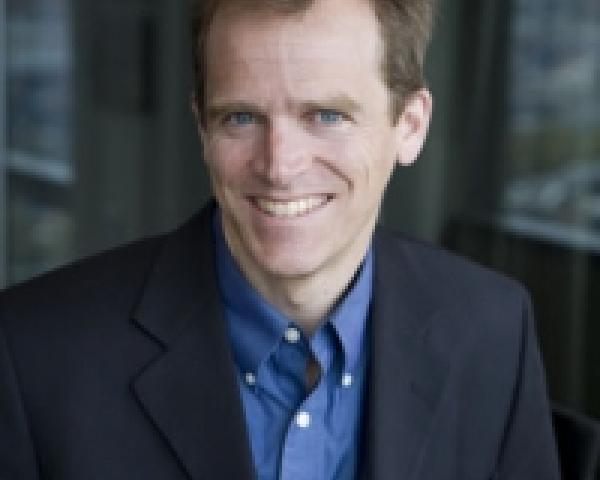With 3 trillion reasons ($$) to protect the status quo, it should be no surprise that employing frontal assault on healthcare would be laughably ineffective. This would be like the revolutionaries battling the British army via a frontal assault. One could argue that top-down, governmental efforts to reform healthcare are experiencing what happens through a frontal assault -- fierce resistance, rage and lobbying to name a few. Rather, there are two overriding drivers to how the Health Rosetta Institute (HRI) is approaching the daunting challenge of attempting to transform an industry that is remarkably adept at preserving a
wildly under-performing status quo.
Healthcare is already fixed. Join us to scale the fixes
As we state on the Health Rosetta Institute’s website, “Healthcare is already fixed. Join us to scale the fixes.” The genesis for the Health Rosetta was my seven-year quest to find all of the solutions that are actually working. The great news is that we’ve found a wide array of pioneers who’ve proven what works in rural and urban settings, in the private and public sector, in large and small organizations and in every corner of the country. They've shown how to tackle even the most vexing health challenges with extremely demanding populations. These are the sorts of things I capture in my forthcoming book,
CEO's Guide to Restoring the American Dream: How to deliver world class healthcare to your employees at half the cost. This is a contrast to what’s happening in DC, which is largely moving deck chairs around on the Titanic debating who pays for a “morbidly obese” healthcare system that is the third leading cause of death (due to preventable medical mistakes) despite pockets of brilliance in our system.
Community-driven change from the bottom-up: A network of networks
We believe in community-driven change from the bottom up. Central governments have largely reached the limits of what they can achieve, so community-level change is where the real action is. Bruce Katz articulates this in his book, "
The Metropolitan Revolution: How Cities and Metros Are Fixing Our Broken Politics and Fragile Economy." Social-impact-investing pioneer Chris Brookfield has put this approach into effect in areas ranging from microfinance to local food production. “Community” can be defined as an employer and its employees, a town, a neighborhood or a group of five women. These are local networks able to drive change in their sphere of influence.
See also: A Caribbean Hospital: Healthcare’s Solution?
Nothing about the Health Rosetta is employer-specific or even U.S.-specific. However, employers and unions are two communities that have an imperative to change. The smart ones are embracing that opportunity and
spending 20-55% less on health benefits with spectacular benefits packages. A key reason that the goal of universal care is feared by some is that both the private and public sector versions of healthcare in the U.S. have out-of-control costs. Government entities themselves are huge employers. With few exceptions (
Kirkland,
Milwaukee and
Pittsburgh are examples of how to do things right), public sector employers are just as bad at purchasing health benefits as any private-sector employer. Even when there is political will, such as in Vermont, efforts at universal coverage failed as unaffordable. For those seeking universal care as an objective, a logical path is for it to start with public-sector employees in high-value benefits programs. Once proven there (like Kirkland, Milwaukee and Pittsburgh), extend to state-based programs such as Medicaid, and then there will be a large body of evidence that it won't bankrupt citizens. In fact, it will do quite the opposite if the smart path is chosen.
The Season of Resilience
Speaking broadly, Brookfield points out how 1950-2001 was the Efficiency Era - or what he calls “The Great Moderation” that had key attributes such as conglomeration and centralized production and control. 2001-2016 was about hierarchies fracturing with tumult such as Brexit and American populism that led to the success of the Sanders and Trump campaigns. Hierarchies are fracturing in healthcare such as an explosion in employers taking control of their healthcare spending and doctors leaving insurance-centric practice models -- in both cases, they’re cutting out middlemen that are out of touch with specific communities.
Looking forward from 2017 is what Brookfield calls the Season of Resilience, where geography is resurgent and grassroots is the dominant lever of change. Just as the electrification of America happened at different rates in different locales, the move toward
Health 3.0 will happen in some geographies faster than others. However, we draw from the lessons of the Internet and open, distributed systems, which is a network of networks. For too long, healthcare has operated as a set of isolated tribes with limitations on tribal knowledge being passed around slowly. We believe the Health Rosetta Institute’s greatest value is serving as a network of networks to accelerate the dissemination of proven approaches that can then be adapted to local market conditions. The first network we're building, due to their
outsized influence on the health ecosystem, is benefits consultants. Despite not promoting it at all and it being
buried on our website, we're getting tremendous interest in our first phase rollout.
One of the individuals most responsible for the explosion of Internet growth was Tom Evslin who has a blog called Fractals of Change. The depiction of fractals show how a fractal is a never-ending pattern (
click for an interactive version). Fractals are infinitely complex patterns that are self-similar across different scales. They are created by repeating a simple process over and over in an ongoing feedback loop. Driven by recursion, fractals are images of dynamic systems – examples include trees, clouds, coral reefs and the Internet in a virtual context.
Another visual is at the heart of the approach we’re taking with the Health Rosetta. The non-profit institute is gathering and sharing insights in an open, distributed manner. It has a sister organization, the Health Rosetta Group (HRG), that is focused on bringing capital to ideas that fuel the positive transformation of the health ecosystem. Brookfield created the graphic depiction below to describe how his social impact investing approach is replicated in a distributed manner. Health and healthcare are very local but there are approaches that can be shared to rapidly accelerate transformation.
[caption id="attachment_26112" align="alignnone" width="968"]

Graphic courtesy of Chris Brookfield[/caption]
The HRG believes sustainable investing requires focus on a particular region/sector with an eye towards social and economic benefits that reflect aligned values. It has a long-term focus that taps motivated local entrepreneurs to create businesses that enhances economic resilience which creates sustainable economic development (“
Economic Development 3.0”). These emerging organizations are strengthened through local business and ultimately can create value for investors that ensures long-term resilience of local interests. We believe the path to optimizing health is a move away from centralized massive assets whether that is massive food production producing low-value food or massive medical centers that produce high volumes of low-value procedures (e.g., where
90% of spinal procedures were of no help). A strategy that is more aligned with community interests will deliver resilience, variability and locality that is part and parcel of
Health 3.0.
See also: Healthcare Buyers Need Clearer Choices
I wrapped up by TEDx talk with the following that seems appropriate here:
For too long, we’ve let healthcare crush the American Dream. We can’t stand for 20 more years of an economic depression for the middle class. No country has smarter or more compassionate nurses and doctors and no country has more innovators that have reinvented our country time and again. In every corner of healthcare, people went into healthcare for all the right reasons but perverse incentives and outdated approaches have shackled them. Whether we knew it or not, we all contributed to this mess. Now, it’s on us to fix it. When change happens community by community, it’s impossible to stop. Yes, healthcare stole the American Dream. But it’s absolutely possible to take it back. Join us to make it happen in your community.
We are working on catalytic events to accelerate the change. The institute is helping raise awareness of the
rising risk to corporations and boards that will compel them to act. In parallel, we continue work on
The Big Heist film (think The Big Short for healthcare) that will wake up America to the greatest heist in American history.
Please share Ted talk: Healthcare stole the American Dream. Here is how we take it back. Sign up for The Future Health Ecosystem Today newsletter to be in the know about healthcare's future. Graphic courtesy of Chris Brookfield[/caption]
The HRG believes sustainable investing requires focus on a particular region/sector with an eye towards social and economic benefits that reflect aligned values. It has a long-term focus that taps motivated local entrepreneurs to create businesses that enhances economic resilience which creates sustainable economic development (“Economic Development 3.0”). These emerging organizations are strengthened through local business and ultimately can create value for investors that ensures long-term resilience of local interests. We believe the path to optimizing health is a move away from centralized massive assets whether that is massive food production producing low-value food or massive medical centers that produce high volumes of low-value procedures (e.g., where 90% of spinal procedures were of no help). A strategy that is more aligned with community interests will deliver resilience, variability and locality that is part and parcel of Health 3.0.
See also: Healthcare Buyers Need Clearer Choices
I wrapped up by TEDx talk with the following that seems appropriate here:
Graphic courtesy of Chris Brookfield[/caption]
The HRG believes sustainable investing requires focus on a particular region/sector with an eye towards social and economic benefits that reflect aligned values. It has a long-term focus that taps motivated local entrepreneurs to create businesses that enhances economic resilience which creates sustainable economic development (“Economic Development 3.0”). These emerging organizations are strengthened through local business and ultimately can create value for investors that ensures long-term resilience of local interests. We believe the path to optimizing health is a move away from centralized massive assets whether that is massive food production producing low-value food or massive medical centers that produce high volumes of low-value procedures (e.g., where 90% of spinal procedures were of no help). A strategy that is more aligned with community interests will deliver resilience, variability and locality that is part and parcel of Health 3.0.
See also: Healthcare Buyers Need Clearer Choices
I wrapped up by TEDx talk with the following that seems appropriate here:








